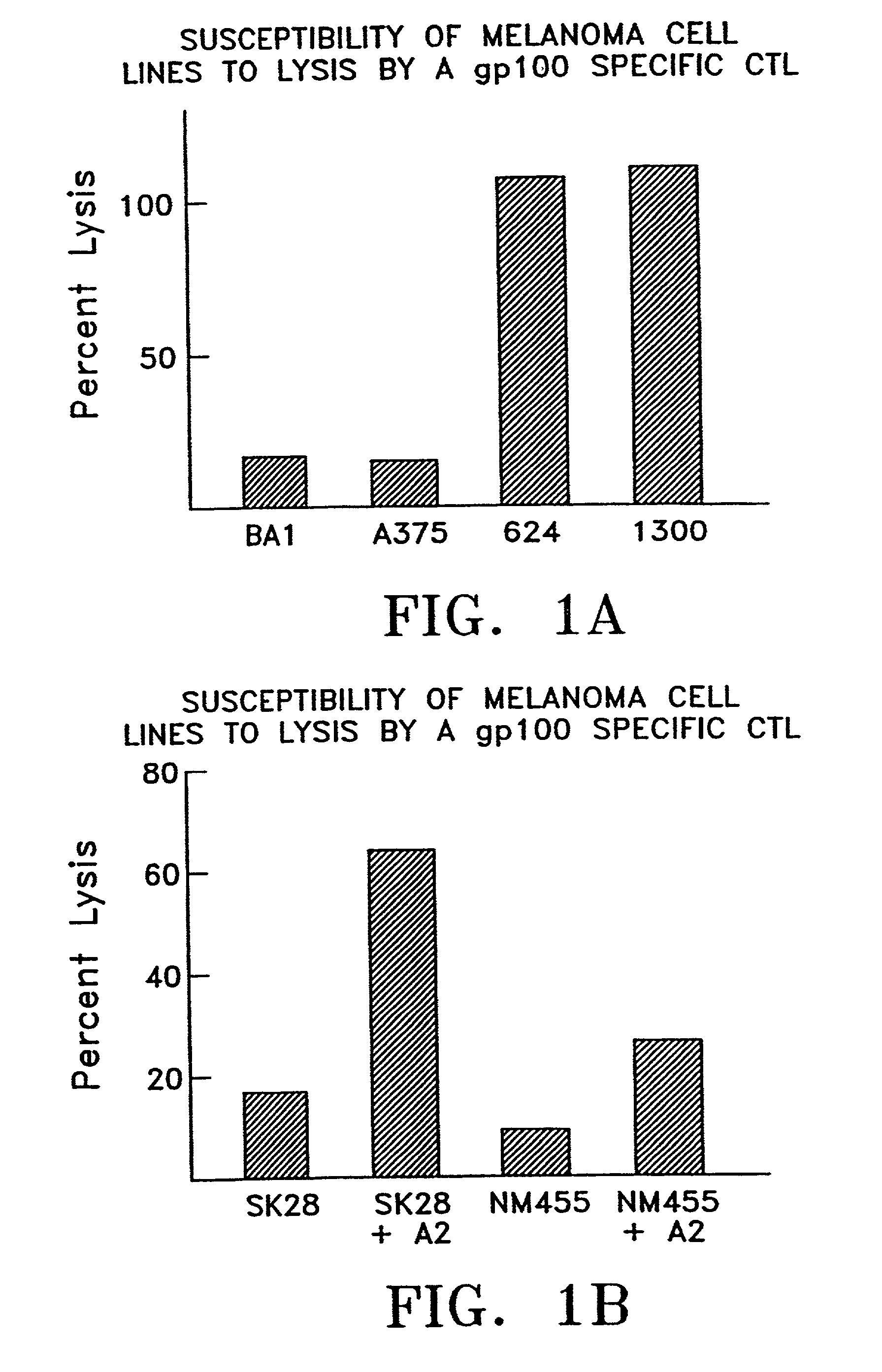Genes differentially expressed in cancer cells to design cancer vaccines
a cancer cell and gene technology, applied in the direction of immunological disorders, drug compositions, peptides, etc., can solve the problems of little immunotherapy for patients suffering with other malignant diseases, and the failure of attempts to identify self-expressed cancer cells that might be good candidates for cytotoxic t cells,
- Summary
- Abstract
- Description
- Claims
- Application Information
AI Technical Summary
Benefits of technology
Problems solved by technology
Method used
Image
Examples
experimental example 1
[0221] Melanoma cell lines, differentially susceptible to lysis by a gp100 specific cytotoxic T lymphocyte (CTL) were subjected to SAGE analysis to determine which SAGE tags were shared amongst the cell lines that were susceptible to lysis against those tags that were absent or less abundant in cell lines that were not susceptible to lysis. Table 2, below shows the phenotypes of melanoma cell lines and for SAGE anlysis.
2TABLE 2 PHENOTYPE OF MELANOMA CELL LINES USED FOR SAGE ANALYSIS CELL LYSIS BY LINE HLA-A2 gp100 ANTI-gp100 CTL 1300MEL + + + 624MEL + + + BA1 + - - A375 + - -
[0222] Ten SAGE tags matched the sorting criteria and were found to be represented at a higher level in cell lines identified as 624mel and 1300mel (that are susceptible to lysis) than in cell lines identified to BA1 and A375 (that are not susceptible to lysis). Two different tags corresponding to the differentially spliced forms of the gp100 mRNA were identified but in addition, 8 other tag sequences were found...
experimental example 2
[0223] Melanoma and breast cancer cell lines, exhibiting differential immunoreactivity to an anti-HER-2 antibody as judged by FACS analysis were subjected to SAGE analysis to determine which SAGE tags were shared amongst the cell lines that showed a high mean fluorescence signal that were less abundant in cell lines that showed a lower mean fluorescence signal. Four SAGE tags matched the sorting criteria and were found to be represented at a higher level in cell lines 21PT and 21MT (that show a strong fluorescence signal) than in cell lines MDA-468, SK28, BA1, NM455 and 1300 mel (that show a weaker fluorescence signal) (Table 4). One tag corresponding to HER-2 was identified but in addition, 3 other tag sequences were found including a tag corresponding to integrin alpha-3. While HER-2 has previously been identified as a target for patient derived T cells, it has not been reported that integrin alpha-3 can also be a target for patient derived immune effector cells or antibodies. Thu...
PUM
| Property | Measurement | Unit |
|---|---|---|
| Immunogenicity | aaaaa | aaaaa |
| Cytotoxicity | aaaaa | aaaaa |
| Antigenicity | aaaaa | aaaaa |
Abstract
Description
Claims
Application Information
 Login to View More
Login to View More - R&D
- Intellectual Property
- Life Sciences
- Materials
- Tech Scout
- Unparalleled Data Quality
- Higher Quality Content
- 60% Fewer Hallucinations
Browse by: Latest US Patents, China's latest patents, Technical Efficacy Thesaurus, Application Domain, Technology Topic, Popular Technical Reports.
© 2025 PatSnap. All rights reserved.Legal|Privacy policy|Modern Slavery Act Transparency Statement|Sitemap|About US| Contact US: help@patsnap.com

